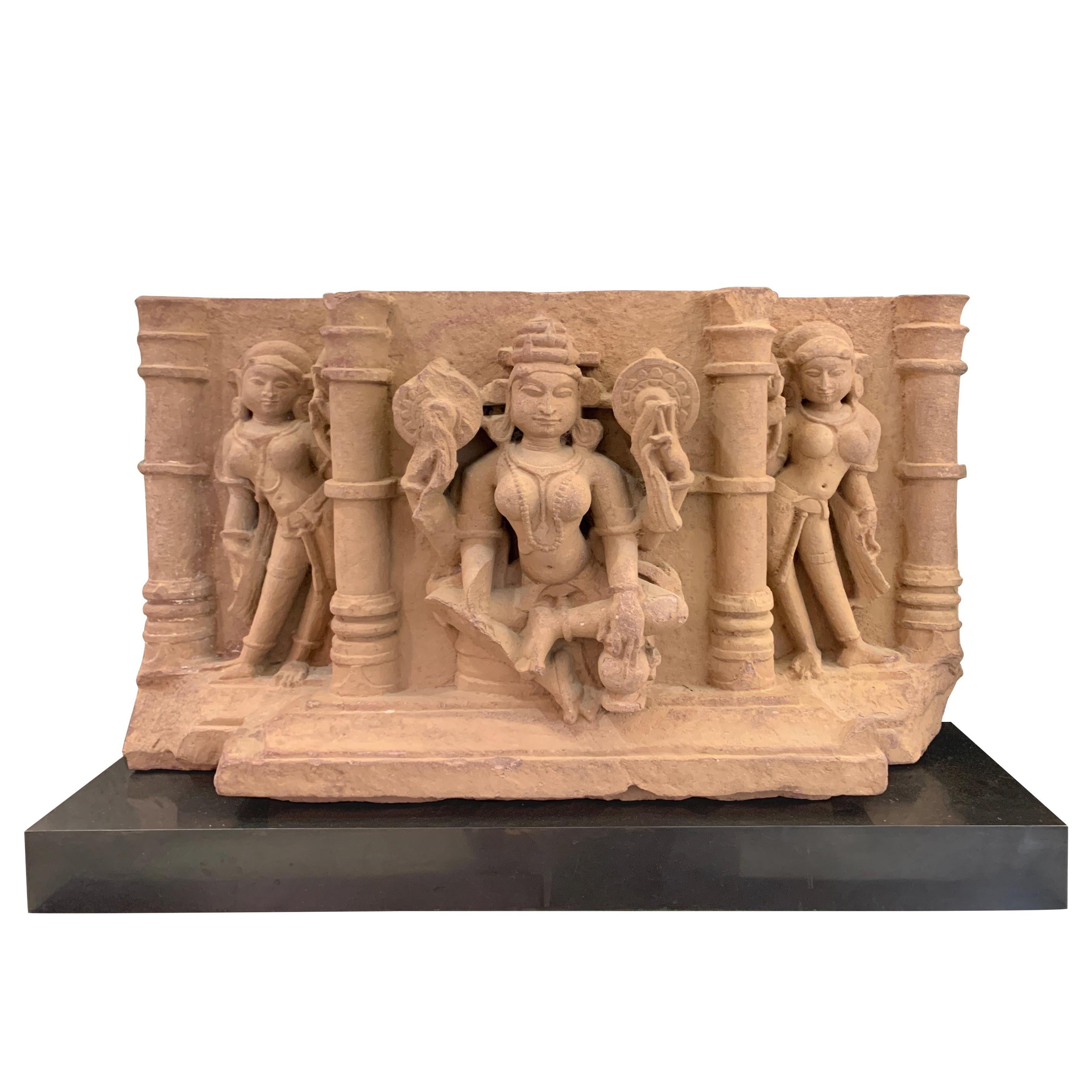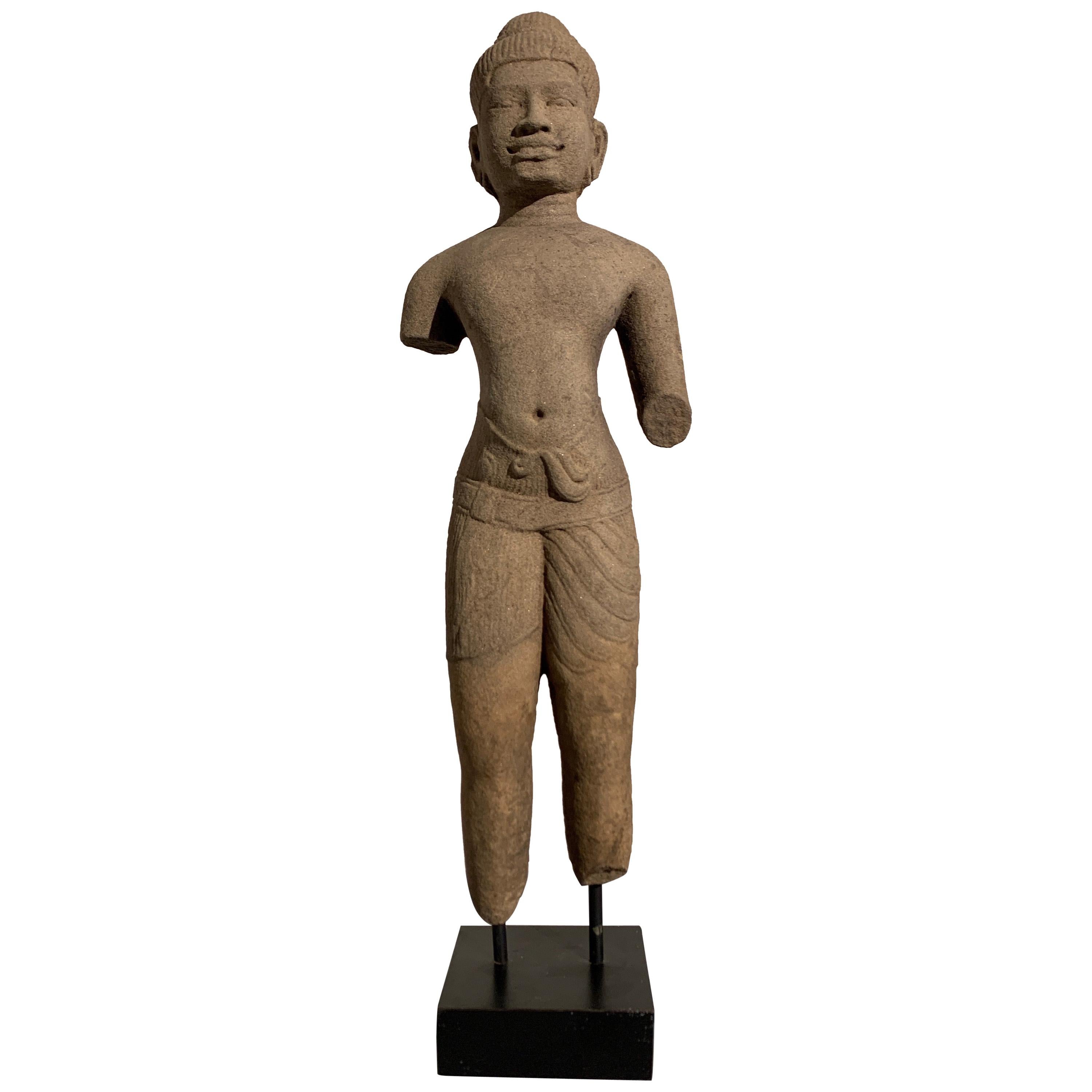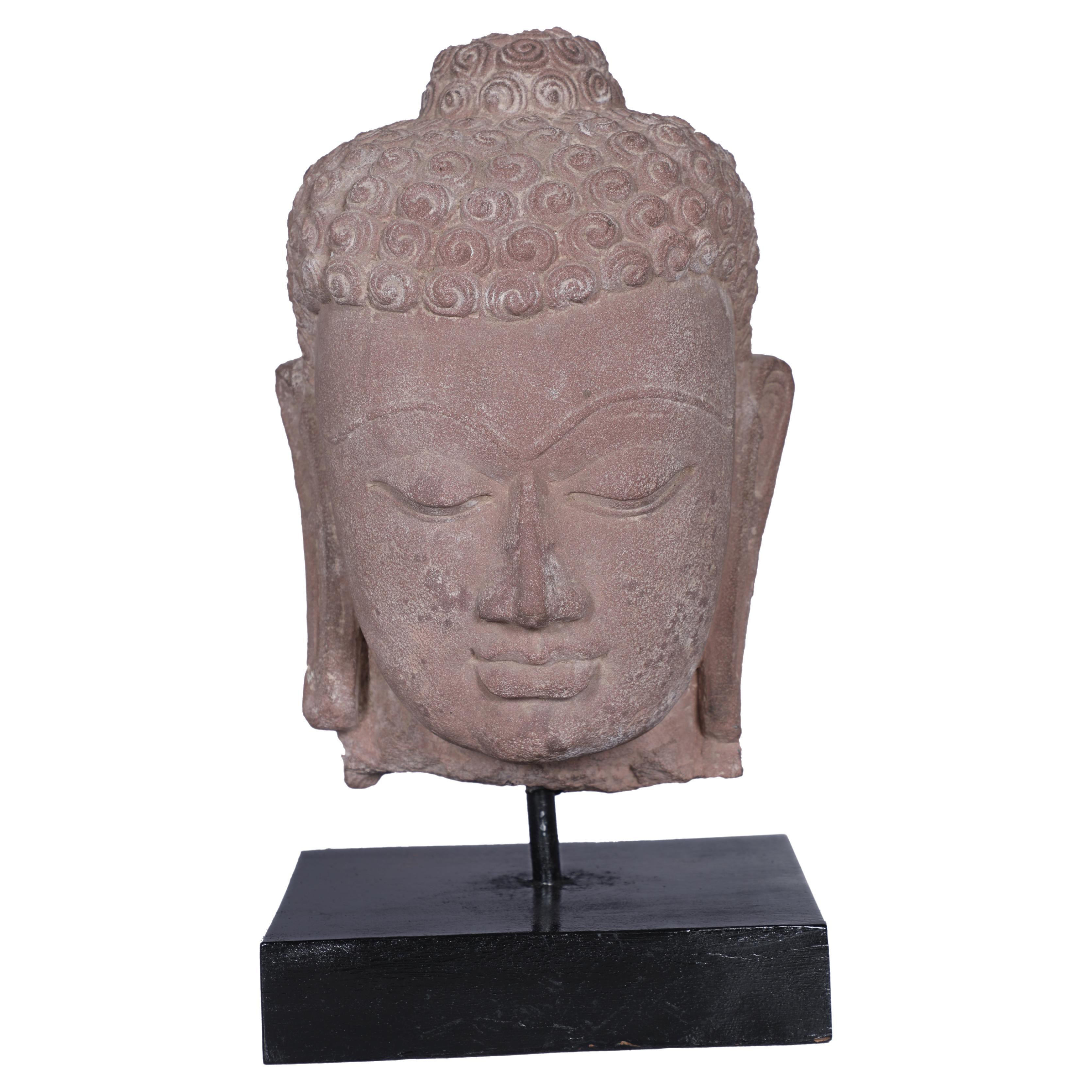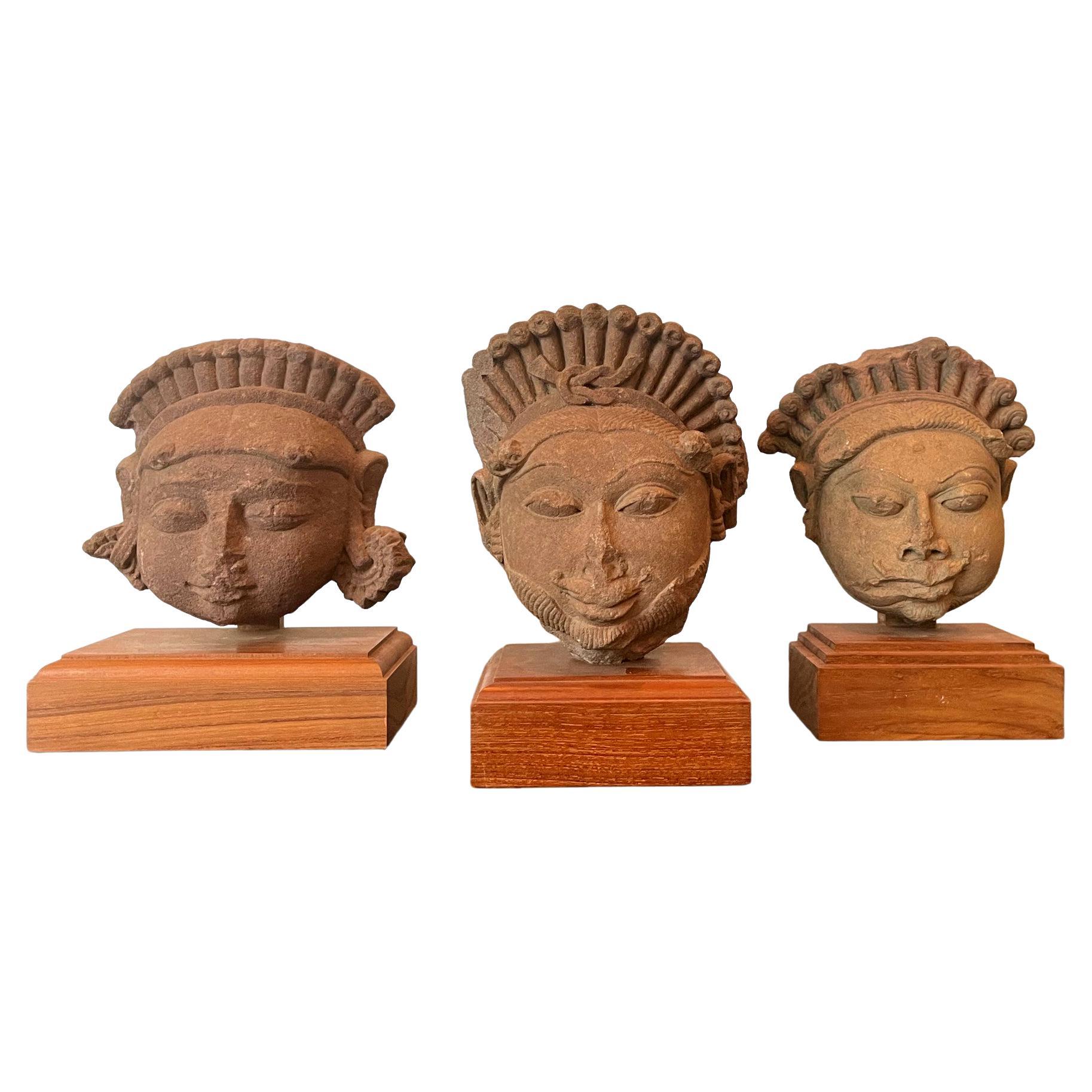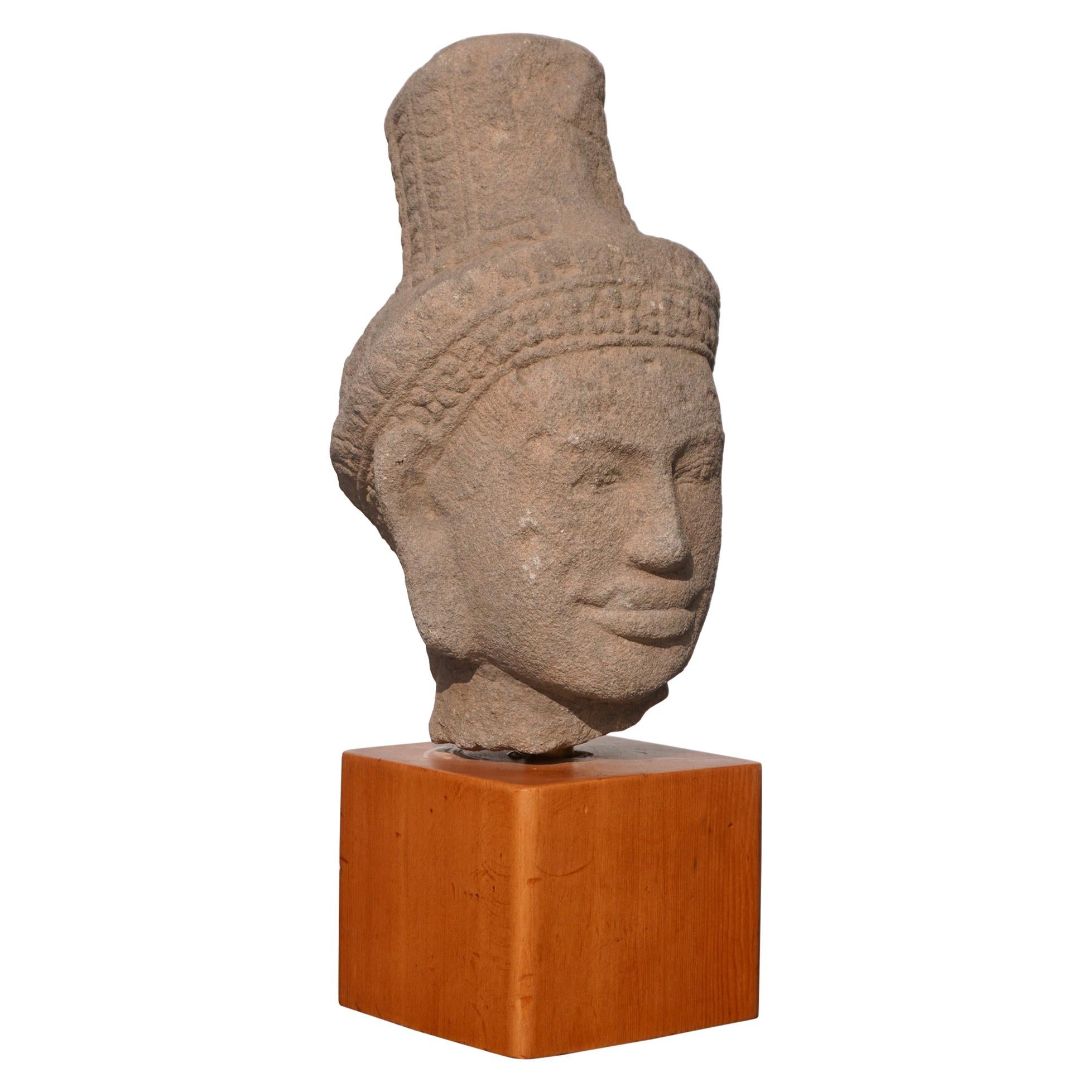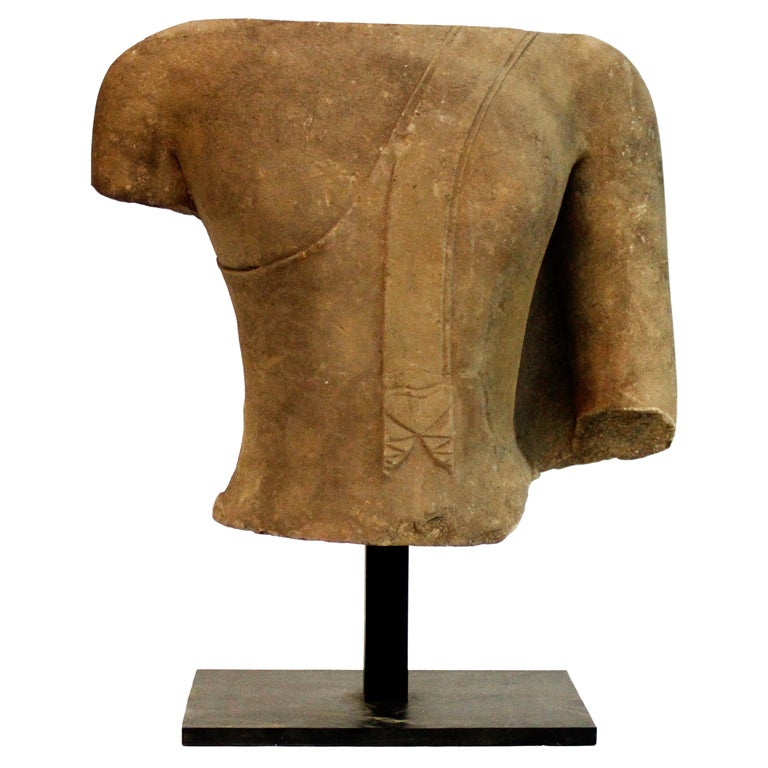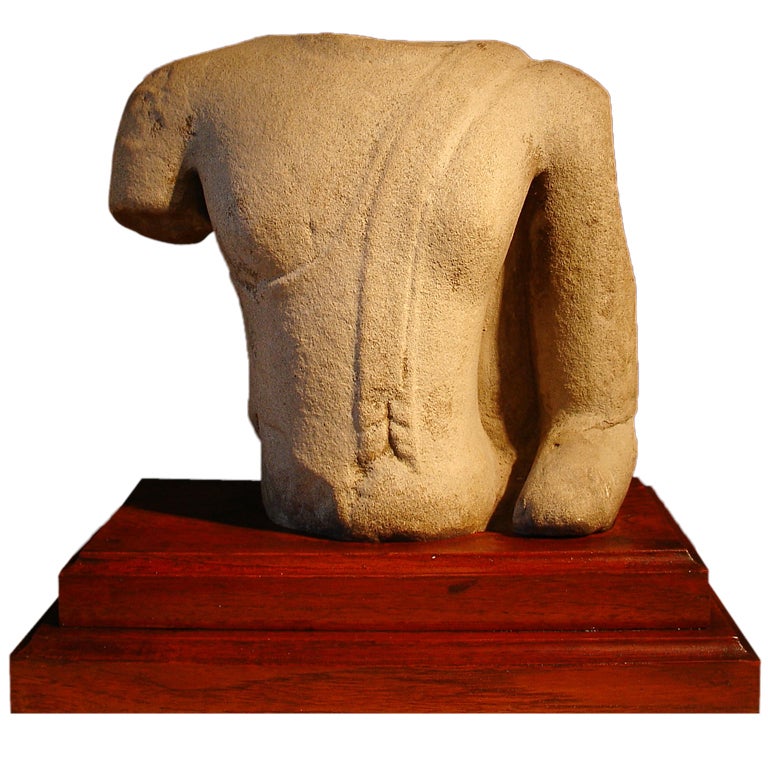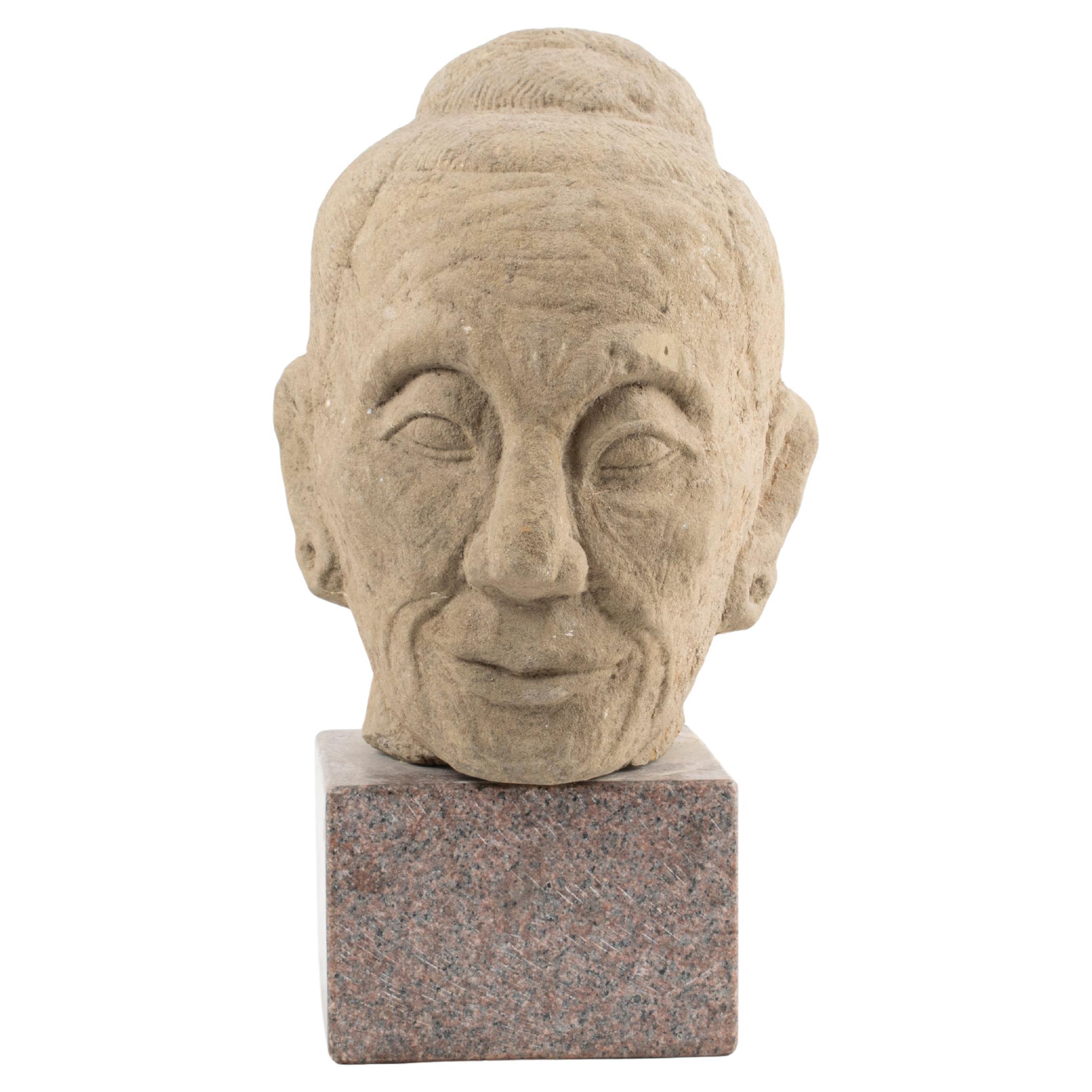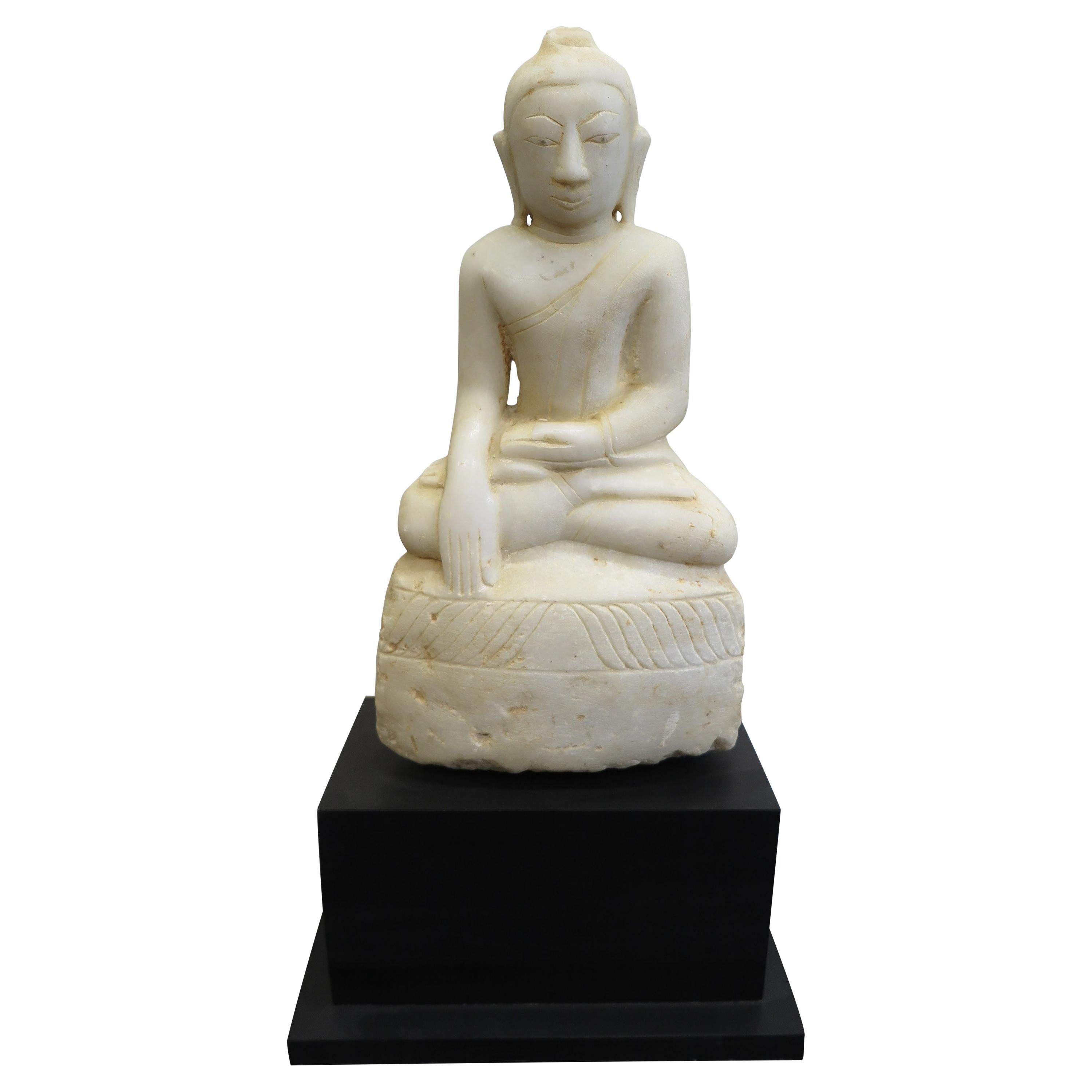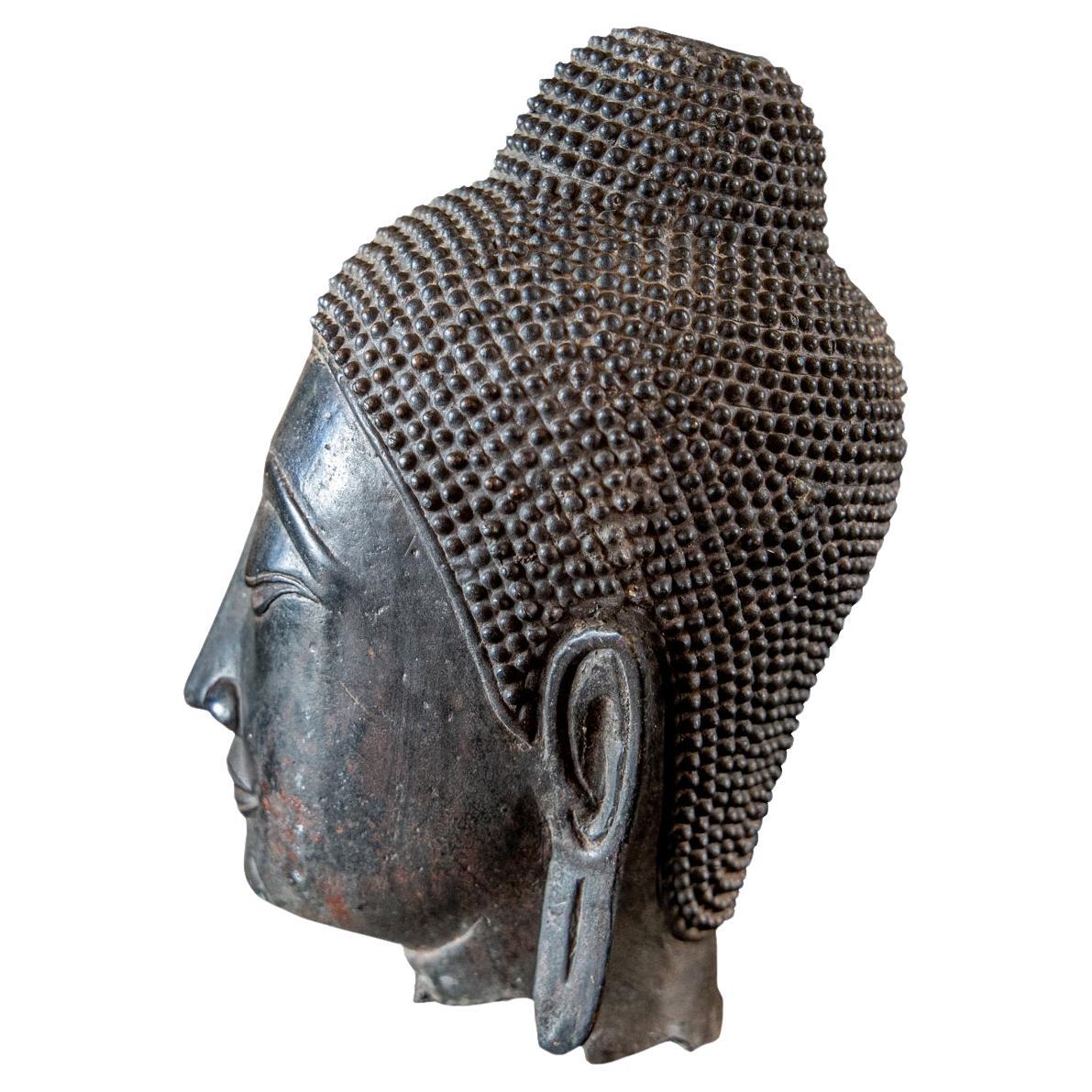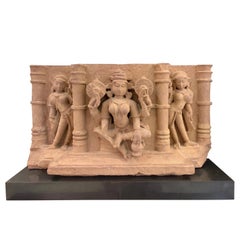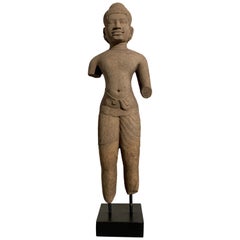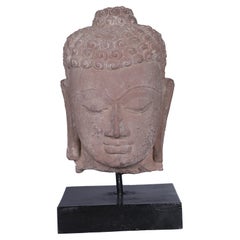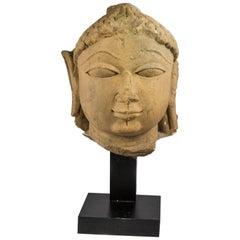
11th Century Yellow Sandstone Indian Head of Buddha Statue
View Similar Items
1 of 2
11th Century Yellow Sandstone Indian Head of Buddha Statue
About the Item
- Dimensions:Height: 9.85 in (25 cm)Width: 7.88 in (20 cm)Depth: 7.88 in (20 cm)
- Materials and Techniques:
- Place of Origin:
- Period:
- Date of Manufacture:11th-12th Century
- Condition:
- Seller Location:Rome, IT
- Reference Number:Seller: 655741stDibs: LU102849517031
You May Also Like
- Indian Carved Sandstone Frieze of Lakshmi, Central India, 10th-11th CenturyLocated in Austin, TXA large and impressive Indian carved sandstone architectural frieze featuring a central image of the Hindu goddess Lakshmi flanked by two atten...Category
Antique 15th Century and Earlier Indian Medieval Sculptures and Carvings
MaterialsSandstone
- Khmer Carved Sandstone Male Deity, Style of the Baphoun, 11th CenturyLocated in Austin, TXA delightful carved sandstone sculpture of an unidentified male deity, Khmer, Angkor Period, style of the Baphuon, 11th century. The smil...Category
Antique 15th Century and Earlier Cambodian Sculptures and Carvings
MaterialsSandstone
- Early 20th Century Sandstone Buddha Head, Northern IndiaLocated in Nantucket, MAA lovely sandstone Buddha head on wooden base, early 1900's, Utttar Pradesh, Northern India. The hand-carved features include the typical snail-s...Category
Early 20th Century Asian Sculptures and Carvings
MaterialsSandstone
- Collection of Three Indian Sandstone Carved Heads of DeitiesLocated in Atlanta, GAA collection of three carved sandstone heads on wood display stands from Northern India Rajasthan or Madhya Pradesh, circa 11-12th century. Fragmented from large whole-body statue, these red sandstone heads exhibit very fine carving, typical of Northern Indian Art during the medieval time. Two males and one female, they represent heavenly deities Yakshas and Yakshini. Their facial features were detailed with large almond-shape eyes under thin arched eyebrows. The males have characteristic facial hairs including curvy moustaches and tightly combed beard, both finely carved, and the female wears large spoke loop earrings. They all don fantastical hairstyles with serpent-like spiral locks and some with elaborate knots on top and above the sideburns. These deities are likely celestial musicians. A pair of full-body statues (lot 70) were offered for sale in Christie's Indian and Southeast Asian Art...Category
Antique 15th Century and Earlier Indian Archaistic Sculptures and Carvings
MaterialsSandstone
- Khmer Sandstone Buddha Shiva Head 11th CenturyLocated in Dallas, TXA sandstone figure head of Shiva Khmer, Baphuon style, circa 11th century. A rare Khmer gray sandstone head of Shiva. The handsome head of the divinity deity Shiva. His face with serene expression, almond-shaped eyes, ridged eyebrows and elongated earlobes, His headdress in tight rows and piled in tresses at the top of the head. Provenance: From a Canadian auction selling the estate of a French gentleman who amassed a large collection of Gandhara, Buddhas and Khmer items throughout his life. Measures: Head: 8 x 4.5 x 4.5 inches (20.5 x 11.4 x 11.4 cm) With stand: 10.7 inches tall Similar to item at Christies SALE 2828, Lot 1124 Indian and Southeast Asian Art 19, March 2014, New York. Shiva ( Siva, lit. the auspicious one) also known as Mahadeva ( lit. the greatest god) is one of the principal deities of Hinduism. He is the Supreme Being within Shaivism, one of the major traditions within contemporary Hinduism. Shiva is known as "The Destroyer" within the Trimurti, the Hindu trinity that includes Brahma and Vishnu. In Shaivism tradition, Shiva is the Supreme being who creates, protects and transforms the universe. In the tradition of Hinduism called Shaktism, the Goddess, or Devi, is described as supreme, yet Shiva is revered along with Vishnu and Brahma. A goddess is stated to be the energy and creative power (Shakti) of each, with Parvati (Sati) the equal complementary partner of Shiva. He is one of the five equivalent deities in Panchayatana puja of the Smarta tradition of Hinduism. According to the Shaivism sect, the highest form of Shiva is formless, limitless, transcendent and unchanging absolute Brahman,[16] and the primal Atman (soul, self) of the universe. There are many both benevolent and fearsome depictions of Shiva. In benevolent aspects, he is depicted as an omniscient Yogi who lives an ascetic life on Mount Kailash[1] as well as a householder with wife Parvati and his two children, Ganesha and Kartikeya. In his fierce aspects, he is often depicted slaying demons. Shiva is also known as Adiyogi Shiva, regarded as the patron god of yoga, meditation and arts. The iconographical attributes of Shiva are the serpent around his neck, the adorning crescent moon, the holy river Ganga flowing from his matted hair, the third eye on his forehead, the trishula or trident, as his weapon, and the damaru drum...Category
Antique 15th Century and Earlier Asian Antiquities
MaterialsSandstone
- An Exquisite Antique Buddha Head StatueLocated in Atlanta, GAAn gilt and lacquered wood Buddha head with displayed on a metal and Lucite stand. stunning presence with its refined features and amazing details. The carving is of exquisite qualit...Category
Antique 18th Century Laotian Archaistic Busts
MaterialsGold Leaf
Recently Viewed
View AllMore Ways To Browse
Large Buddha Statue
Large Buddha Head
Sandstone Head
Indian Head Sculpture
Buddha Indian
Buddha Head Statue
Sandstone Head Sculpture
Antique Indian Statues
Antique Indian Statue
Sculpture India Sandstone
Buddha Shakyamuni
Buddha Sandstone
Sandstone Buddha
Indian Sandstone
Indian Antique Statues Statue India
Indian Sandstone Sculpture
Sandstone Buddha Head
Shakyamuni Buddha Statue
